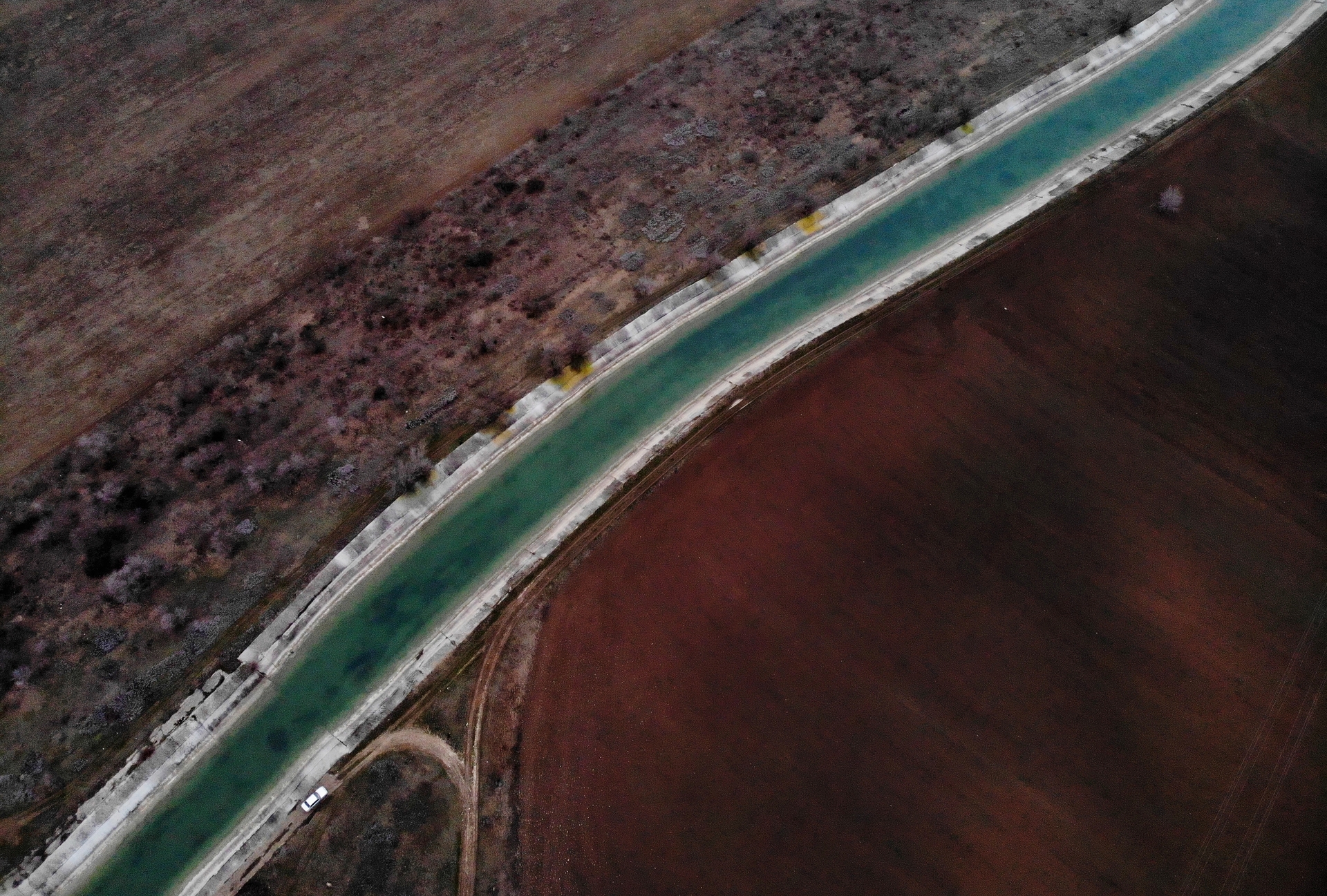A special military operation of the RF Ministry of Defense to protect residents of the DPR and LPR began on February 24.
One of its first successes was the exit of Russian troops to hydraulic structures in the south of the Kherson region of Ukraine.
With their help, in May 2014, the Ukrainian authorities decided to leave the inhabitants of the peninsula that had just become part of Russia without water from the Dnieper.
“Part of the riverbed is overgrown with forest”
The lack of water has created many problems for the inhabitants of the peninsula.
Thanks to the efforts of Russia, they were generally resolved, but nevertheless, in dry years, for example, in the summer of 2020, there was a lack of water in Crimea.
RIA News
© Max Vetrov
Now all the difficulties associated with this should be left behind.
Already on February 25, the day after the start of the special military operation, the head of the Crimea, Sergey Aksyonov, visited the Ukrainian hydraulic structures in the Kherson region.
“I examined the state of the channel of the North Crimean Canal from the border of Crimea to the water intake facilities in the Kalanchak area, a concrete dam built in 2014 to shut off water to the Crimea.
There are issues that will take some time to resolve.
Part of the channel channel on the territory of Ukraine is overgrown with forest.
The cleanup work will take about two weeks.
As for the barrier built by the nationalists, it will be removed by the Ministry of Defense.
In addition, the military will assess the condition of the hydraulic structures from Kalanchak and further deep into the territory of Ukraine,” Aksyonov said.
According to him, in order to supply water to the Crimea without harming the residents of the Kherson region, technical solutions are needed to restore the dampers.
We have no problems with domestic water supply, the Crimeans endured the consequences of the water blockade for a long time, so for two weeks we will not be able to change the weather.
By Monday, a roadmap will be formed and will be reported to our President.
The main thing is that there is an understanding that Crimea will be with water and this will not create any problems for the residents of the Kherson region, ”Aksenov told reporters.
The next day, February 26, the dam that blocked the way for the Dnieper water to the SKK was blown up by the Russian military.
Recall that the SKK was built in the 1960s of the last century to irrigate the arid lands of the Kherson region and the Crimea from the Kakhovka reservoir on the Dnieper.
Of all the water sources of the peninsula, it accounted for about 80%.
Most of the water supplied through the canal was used for agriculture, about 20% went to the Crimean reservoirs.
Thus, the resumption of the canal should first of all have a positive impact on the economic life of the peninsula and noticeably revive local agriculture.
Possible difficulties
However, due to a long break, a number of difficulties may arise during the re-launch of a hydraulic structure of this magnitude, so it is necessary to prepare for this step, experts say.
RIA News
© Ministry of Defense of the Russian Federation
“Primary problems are associated with a complete revision of the state of waterproofing of each cascade of the SCC, phased reconstruction and phased filling of each cascade.
Hundreds of kilometers of water irrigation canals and networks require such a revision, which, after eight years of inactivity, could not maintain reliable waterproofing, and the inevitable drainage can not only lead to flooding of villages located in the lowlands, but can also withdraw thousands of hectares of agricultural land from land use.
The risks are high, so a phased commissioning of the CCM is necessary, ”Yuri Komov, chairman of the board of the Association of Farmers, Cooperatives, Private Farms and Rural Green Tourism of Crimea, told RT.
The Russian Water Supply and Sanitation Association notes that it is necessary to pay special attention to the condition of the protective coating, to the existing branches from the North Crimean Canal, into which water can pour when it is filled, to the presence of litter and vegetation in the channel.
“The simplest primary activities are cleaning the channel of the structure and inspecting the condition.
After that, if satisfactory results are obtained, the gradual filling of the structure can begin.
The existing dam, which blocks the path of the Dnieper water from terrorist attacks and undermining, should be maximally secured, since the instantaneous destruction of the canal dam will lead to negative consequences, the formation of a large wave, possible destruction of infrastructure and flooding of territories, ”explained RT in the association.
The scientific director of the Institute of Water Problems of the Russian Academy of Sciences, economist and ecologist Viktor Danilov-Danilyan believes that the canal mechanisms can be quickly brought back to the state they were in before the shutdown.
“Because the pumping stations have survived.
They can be brought into working condition within two to three weeks.
As for the restoration of the channel, this process is longer and it requires both design and significant financial resources,” he said.

